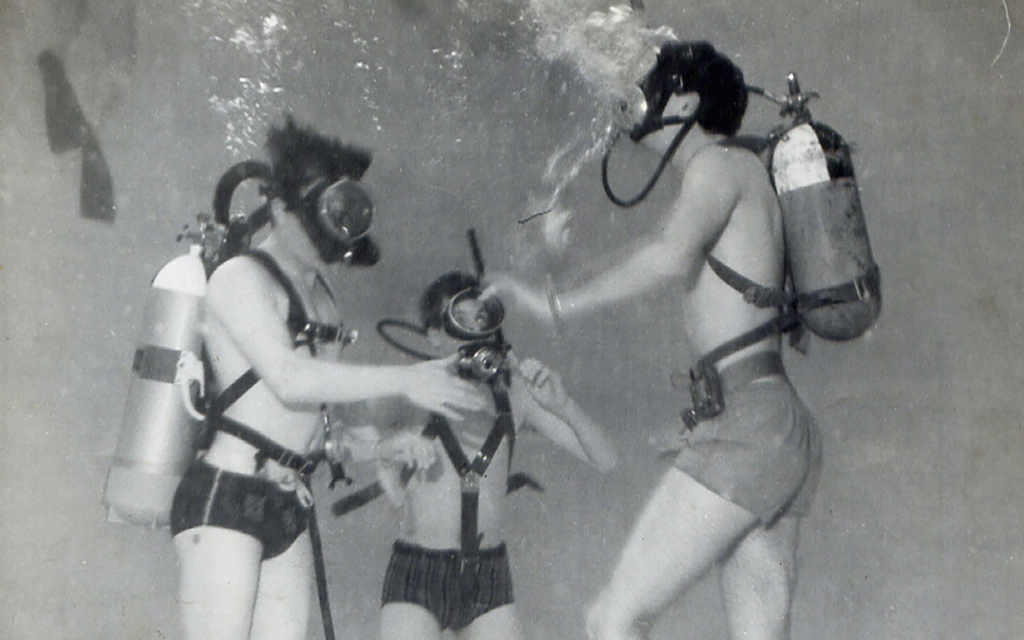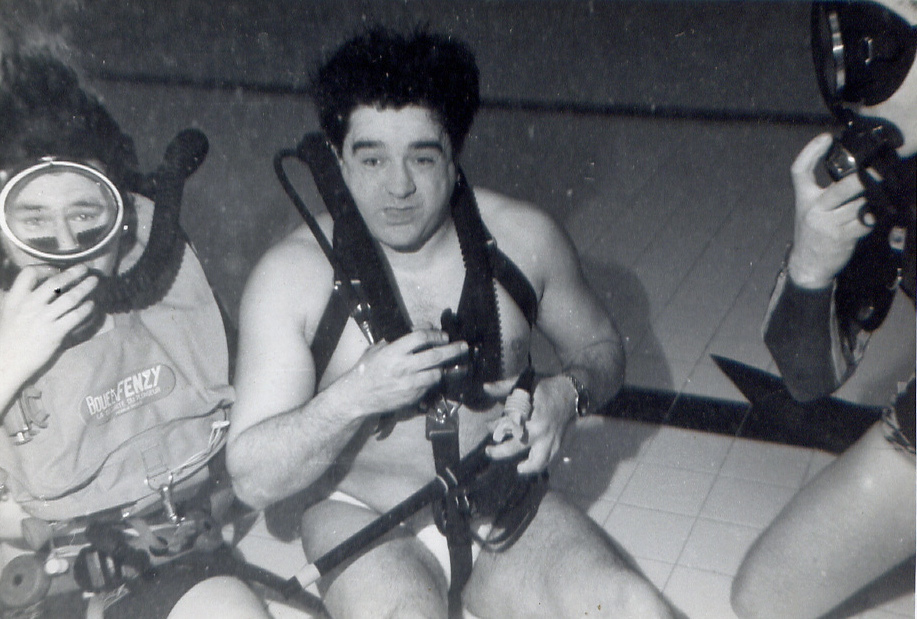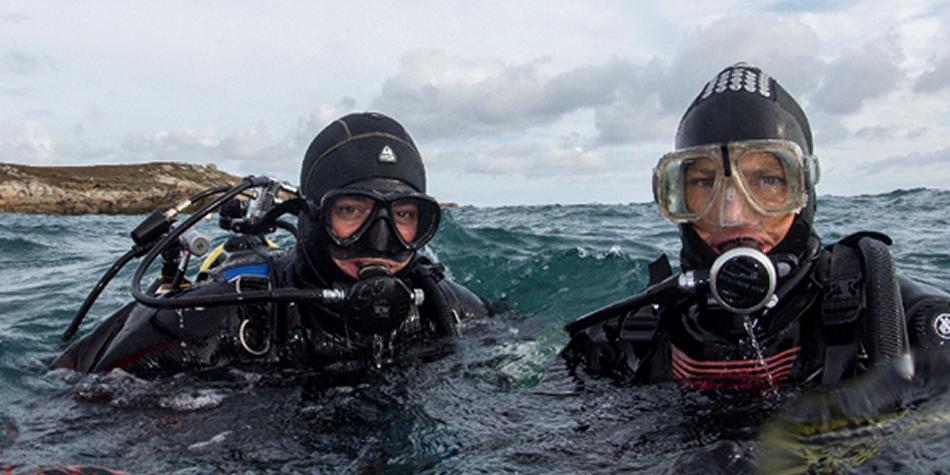
Image courtesy Tyneside BSAC
70 years ago the founders of BSAC set out that “…a proper training programme should be followed and that the ‘golden rule’ should be ‘never dive alone’”.
Jim Watson, BSAC Safety and Training Manager explains that having evolved extensively since that time, these founding principles continue to this day.
Training
From the outset training was progressive, with initially three diver grades of 3rd, 2nd and 1st Class Diver, which prevailed until 1984, when new grades were introduced of Novice, Sports, Dive Leader and Advanced Diver, although First Class Diver still remains today. Progressive development continued before the replacement of Novice with Club Diver in 1998. 2002 saw the radical revision of the Diver training programme (DTP) with an extensive rewrite of Sports, Dive Leader and Advanced and Club Diver becoming Ocean Diver. 2007 saw the incorporation of basic nitrox training within Ocean and Sports Diver before more recent reviews; and in 2023 a complete revision of Dive Leader was completed. Throughout this development each revision has provided increasingly detailed guidance for students and for instructors delivering the courses.
Instructor training has followed a similar development path and today’s syllabus for Open Water Instructor (OWI) is internationally accredited to an ISO standard, as are a number of BSAC diver grades and courses. BSAC has long had a wide range of short courses providing excellent training not just in diving skills but also support activities including first aid, seamanship, compressor operation and gas blending. In 1995 BSAC took the first tentative step into nitrox and in the early 2000s embraced more technical courses including rebreathers and mixed gas diving and now boasts a comprehensive suite of this training.
Safety
From the outset of forming BSAC, safety was foremost in everyone’s mind and the ‘never dive alone’ rule was the starting point for many other golden rules, which were accumulated and formed the heart of the first published training programmes and provoked much staunch debate, initially at the AGMs and subsequently at the Diving Officers’ Conferences introduced in 1964. Those same events included reports on various diving incidents that had occurred during the year, often accompanied by some forthright comments about the decisions made by those concerned. Incident reporting became an increasingly more formalized process, including the appointment of incidents advisors charged with overseeing the process. The current annual Incident Report includes a record of BSAC membership numbers and UK diving fatalities since 1965. Initially all forms of UK diving were included in the report until the decision was taken in 1972 to only include recreational diving incidents.
The purpose throughout has been to learn from the misfortunes of others and the lessons learned have informed and been reflected in not just the development of the DTP but in the wealth of safety advice and guidance available including Safe Diving. A notable safety advance came in 1985, when BSAC became the first diving organisation to introduce oxygen administration access and training for divers, through the collaboration of Trevor Davies with Jim Corry of NAUI. The ability to provide oxygen for diving injuries has helped make substantial improvements in first aid treatment and especially resuscitation recovery (see the rescue efficacy section of the 2018 Incident Report).
Safety also involves working in partnership with other oganisations and throughout our history BSAC has maintained close working relationships with the likes of MCA, RNLI, RoSPA, HSE and the like not just on diving matters but on all aspects of water safety, including being a founding member and active partner in the National Water Safety Forum (NWSF). The BSAC Incident reporting system has also resulted in invitations to attend and speak at international safety conferences including two fatalities conferences in the USA hosted by DAN.

Equipment developments
Looking back now to some of the equipment used in 1953, including converted Calor gas cylinders and gas masks and homemade wetsuits with the ubiquitous yellow tape over the seams may seem terrifying today. However, it speaks to the commitment, inventiveness, and determination of those early pioneers. The intervening 70 years have resulted in the refinement and increased reliability of diving equipment, with consequent increases in safety. The development of new types of equipment including ABLJ, drysuit, computer, rebreather, DSMB etc. have each further contributed to the safety of the sport, but their introduction has not always been widely accepted initially. Some have viewed new developments as a step too far, often emotively describing them as ‘dangerous’ and triggering extensive debate and sometimes seriously entrenched positions. However, as training and diving safety procedures were developed, often as a result of incident analysis, then it often provides beneficial improvements to diving safety.
The cycle of innovation, development and integration will doubtless continue, and we look forward to whatever the next 70 years will bring.
If the above whets your appetite to delve back into history I can recommend ‘The Club’ by Reg Vallintine as stimulating late night reading. You might even be surprised at how many of today’s ‘innovative new ideas’ have been around previously...
Stay safe – dive safe
Jim Watson
Safety and Development Manager


 Author: Jim Watson | Posted 20 Oct 2023
Author: Jim Watson | Posted 20 Oct 2023



